BECN1
-
Official Full Name
beclin 1, autophagy related -
Overview
Beclin-1 participates in the regulation of autophagy and has an important role in development, tumorigenesis, and neurodegeneration -
Synonyms
BECN1;beclin 1, autophagy related;ATG6;VPS30;beclin1;beclin 1 (coiled-coil, moesin-like BCL2 interacting protein);ATG6 autophagy related 6 homolog (S. cerevisiae);Beclin-1;Coiled-coil myosin-like BCL2-interacting protein;Protein GT197;GT197;ATG6 autophagy related 6 homolog;ATG6;VPS30;beclin1;Bcl-2-interacting protein beclin
Recombinant Proteins
- Human
- Zebrafish
- Chicken
- Mouse
- Rhesus macaque
- Rat
- E.coli
- Mammalian Cells
- Wheat Germ
- HEK293
- In Vitro Cell Free System
- GST
- His
- MBP
- Non
- Avi
- Fc
- Flag
- DDK
- Myc
- SUMO
Background
What is BECN1 Protein?
BECN1, also known as Beclin 1, plays a central role in autophagy, a vital cellular process where cells clean up and recycle their own components. Imagine autophagy as the cell's housekeeping service, ensuring everything runs smoothly and efficiently. BECN1 is essential for forming autophagosomes, the structures that capture and degrade waste materials within the cell. Beyond just tidying up, BECN1 influences cell survival, immune function, and helps defend against infections and cancer. When BECN1 doesn't work properly, it can lead to various health issues, including neurodegenerative diseases and cancer progression. Scientists are exploring BECN1's functions to develop new treatments by targeting its activity, hoping to address these health challenges effectively.What is the Function of BECN1 Protein?
BECN1, or Beclin 1, is like the master organizer in the cell, crucial for the process of autophagy, where the cell breaks down and recycles its own materials. Think of it as the cell's way of tidying up and clearing out clutter. BECN1 helps in forming autophagosomes, which are like little garbage trucks collecting unwanted or damaged parts of the cell to be processed and reused. This activity is not just about cleanliness; it helps cells survive stress, manage energy resources, and respond to infections. BECN1 also plays a role in controlling cell death and has been linked to immune responses and fighting diseases like cancer. When BECN1 doesn’t function correctly, it can lead to problems, including disease progression. Understanding BECN1's function is key for researchers aiming to find new treatments for various conditions where cell cleanup processes go astray.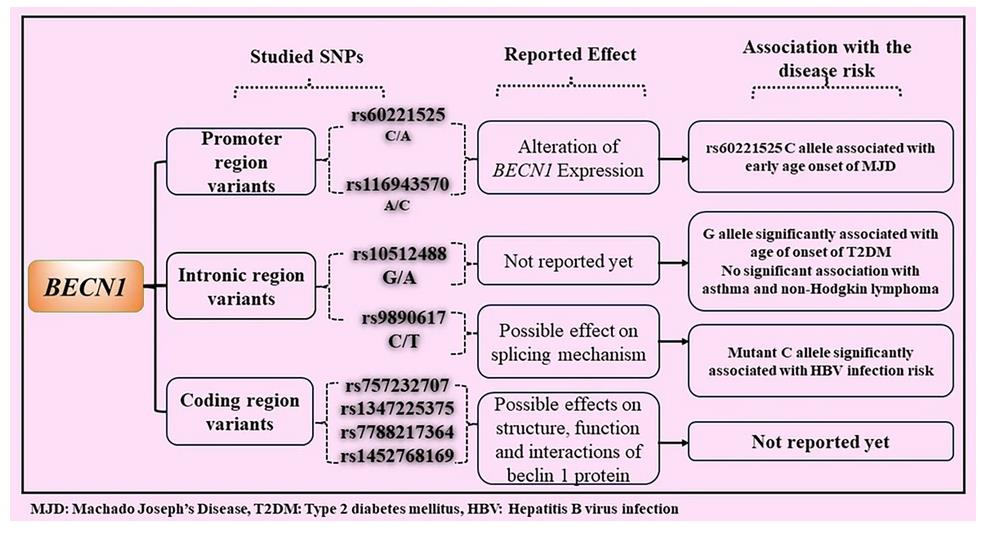
Fig1. Flowchart depicting studied SNPs of BECN1, detailing their impact on the gene or protein and their reported associations with diseases. (Sargeet Kaur, 2024)
BECN1 Related Signaling Pathway
BECN1, also known as Beclin 1, plays a crucial role in autophagy, allowing cells to clean up and recycle their own materials. It triggers the development of autophagosomes, which are responsible for capturing and breaking down cellular waste. Additionally, BECN1 is part of essential signaling pathways like PI3K/Akt/mTOR, which are vital for managing how cells grow and process energy. When BECN1 functions well, it helps keep cell survival and death in check, maintaining cell health. However, disruptions in pathways involving BECN1 can cause issues like cancer, where cell growth and death regulation become unbalanced. Researchers are looking into these pathways to find ways to target BECN1 for preventing and treating diseases.BECN1 Related Diseases
BECN1, often called Beclin 1, plays a crucial role in how our cells clean up and function through a process called autophagy, kind of like a cellular housekeeping. When Beclin 1 isn't doing its job right, it can lead to issues. In cancers, like breast and ovarian cancers, low Beclin 1 levels can allow cancer cells to grow uncontrollably due to poor cell maintenance. In the brain, if Beclin 1 fails to work efficiently, it might cause problems in conditions like Alzheimer's and Parkinson’s, where faulty proteins accumulate and disrupt neuron function. Beclin 1 is also vital for fighting off infections, and when it's not active, the body can struggle to fend off harmful invaders. Essentially, Beclin 1 is key to keeping everything running smoothly.Bioapplications of BECN1
Beclin 1 is more than just a part of autophagy; it's like a hidden hero in many biotechnological applications. In cancer research, scientists are exploring ways to harness Beclin 1 to improve how cells clear out toxins and stop tumor growth. They're even looking at it for new therapies. It’s also being studied for its role in neuroprotective strategies, possibly helping develop treatments for diseases that mess with the brain like ALS or Huntington's. In addition to therapies, Beclin 1 might be useful in creating better models for studying diseases, giving researchers a clearer picture of what’s going on at the cellular level. Overall, Beclin 1 opens up tons of possibilities in medicine and biotechnology, pointing us toward innovative treatments and deeper understanding.Case Study
Case Study 1: Song X. et al. Curr Biol. 2018
Ferroptosis happens when cell lipid damage is triggered by blocking system Xc-. BECN1 helps this process by binding to SLC7A11, shutting down system Xc-. Reducing BECN1 stops ferroptosis from system Xc- inhibitors but not other triggers. This involves BECN1 being phosphorylated by AMPK, leading to the BECN1-SLC7A11 complex and lipid damage. Blocking AMPK prevents this chain of events. A mutant BECN1 that can't be phosphorylated stops lipid damage and ferroptosis. Boosting BECN1 in cancer cells increases ferroptotic death, which could be useful in cancer therapy.-
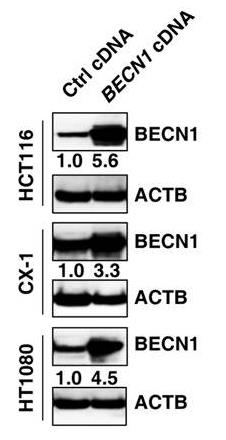 Fig1. Western blot analysis of BECN1 expression in BECN1-overexpressing cells.
Fig1. Western blot analysis of BECN1 expression in BECN1-overexpressing cells. -
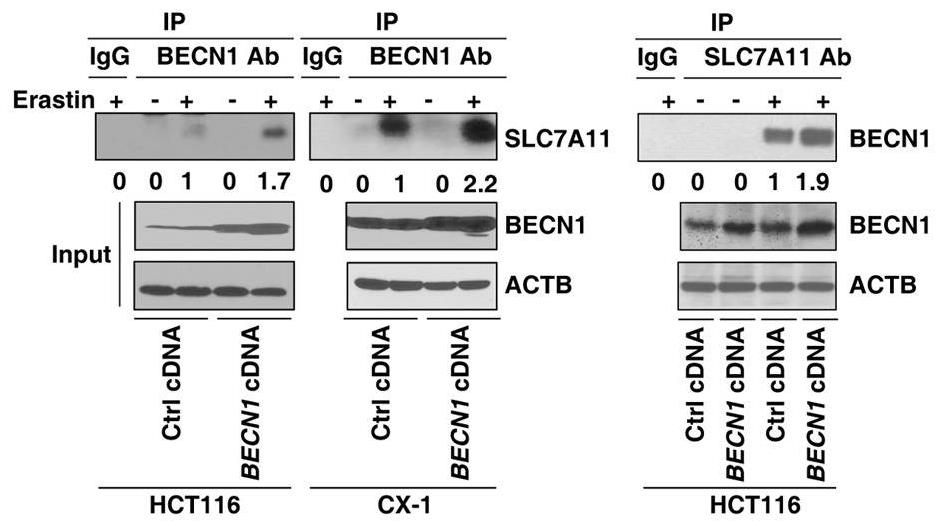 Fig2. IP analysis of BECN1-SLC7A11 formation in the indicated cells.
Fig2. IP analysis of BECN1-SLC7A11 formation in the indicated cells.
Case Study 2: Zhong Y. et al. Cell Death Dis. 2024
Drug resistance in ovarian cancer is a major hurdle. We found lncRNA LOC730101 can reduce this resistance. In platinum-resistant tissues, LOC730101 is low, but boosting it enhances chemo-triggered cell death. It works by binding to BECN1, blocking autophagy, and increasing sensitivity to drugs like cisplatin. Additionally, it affects RNF168 through p62, hampering DNA repair and further boosting drug sensitivity.-
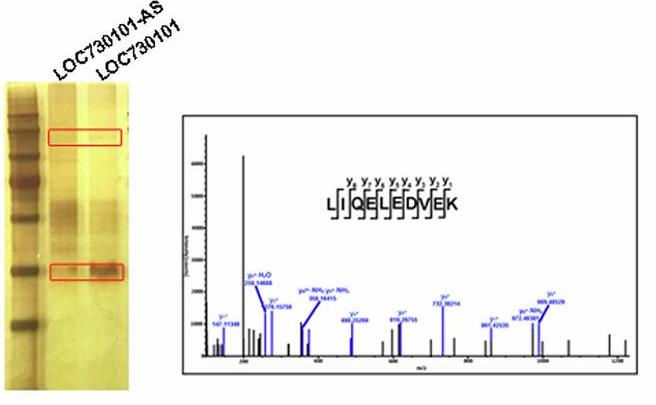 Fig3. Mass spectrometry analysis detected the absorption peak map of the peptide segment of the key autophagy protein BECN1.
Fig3. Mass spectrometry analysis detected the absorption peak map of the peptide segment of the key autophagy protein BECN1. -
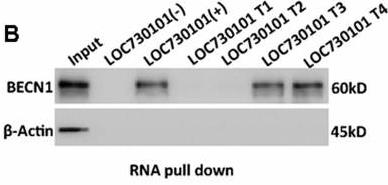 Fig4. The expression of BECN1 protein was detected by the RNA pull-down test of LOC730101 antisense chain and its deletion mutant combined with Western Blot.
Fig4. The expression of BECN1 protein was detected by the RNA pull-down test of LOC730101 antisense chain and its deletion mutant combined with Western Blot.
Quality Guarantee
High Purity
-
.jpg) Fig1. SDS-PAGE (BECN1-189H)
Fig1. SDS-PAGE (BECN1-189H) -
.jpg) Fig2. SDS-PAGE (BECN1-0746H)
Fig2. SDS-PAGE (BECN1-0746H)
Involved Pathway
BECN1 involved in several pathways and played different roles in them. We selected most pathways BECN1 participated on our site, such as Regulation of autophagy, which may be useful for your reference. Also, other proteins which involved in the same pathway with BECN1 were listed below. Creative BioMart supplied nearly all the proteins listed, you can search them on our site.
| Pathway Name | Pathway Related Protein |
|---|---|
| Regulation of autophagy | ATG5,IFNA8,IFNA21,GABARAP,IFNPHI3,INS,IFNPHI1,ATG4C,ATG4B,IFNA13 |
-
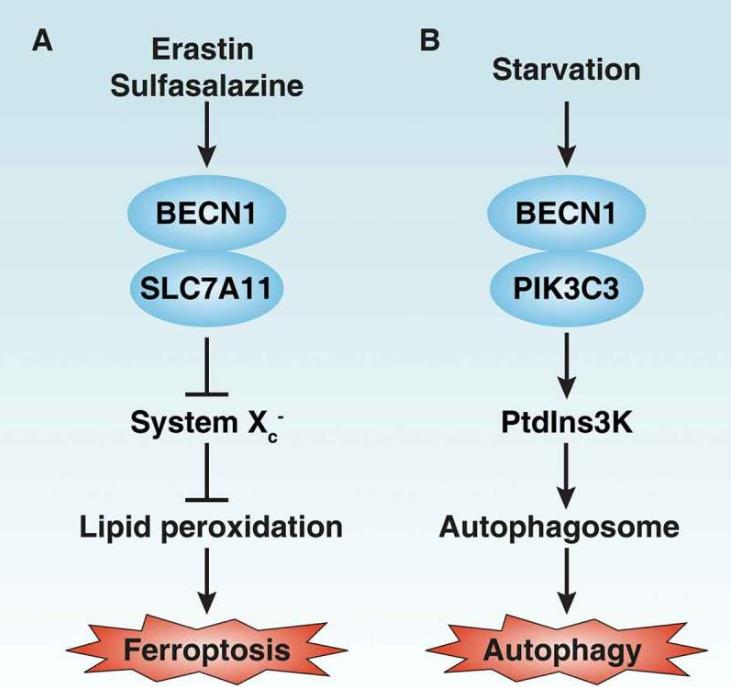 Fig1. BECN1 complexes in ferroptosis and autophagy. (Rui Kang, 2018)
Fig1. BECN1 complexes in ferroptosis and autophagy. (Rui Kang, 2018) -
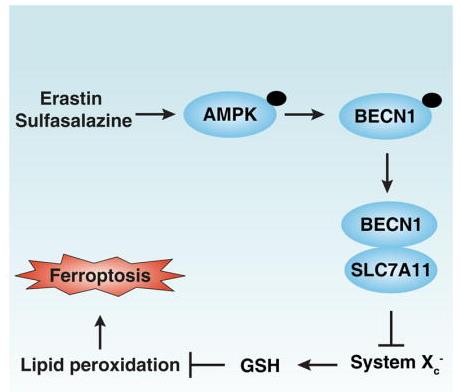 Fig2. BECN1 promotes ferroptosis by directly blocking system Xc- activity via binding to its core component SLC7A11. (Francisco E Velázquez, 2019)
Fig2. BECN1 promotes ferroptosis by directly blocking system Xc- activity via binding to its core component SLC7A11. (Francisco E Velázquez, 2019)
Protein Function
BECN1 has several biochemical functions, for example, phosphatidylinositol 3-kinase binding,protein binding,ubiquitin protein ligase binding. Some of the functions are cooperated with other proteins, some of the functions could acted by BECN1 itself. We selected most functions BECN1 had, and list some proteins which have the same functions with BECN1. You can find most of the proteins on our site.
| Function | Related Protein |
|---|---|
| phosphatidylinositol 3-kinase binding | IRS2,IGF1R,IGF1RB,TYRO3,IGF1RA,INSR,IRS1,IRS4,CORO1A,FLT3 |
| ubiquitin protein ligase binding | CHEK2,ATP6V0C,FZD8,SMAD7,UBE2NB,HM13,STUB1,PIAS2,UBXN6,ACTG1 |
| protein binding | ADAP2,ETV4,COMMD6,TXLNA,EFHC2,NGFRB,POC1A,SLC14A2,TINF2,RAB41 |
Interacting Protein
BECN1 has direct interactions with proteins and molecules. Those interactions were detected by several methods such as yeast two hybrid, co-IP, pull-down and so on. We selected proteins and molecules interacted with BECN1 here. Most of them are supplied by our site. Hope this information will be useful for your research of BECN1.
ATG14
Resources
Related Services
Related Products
References


